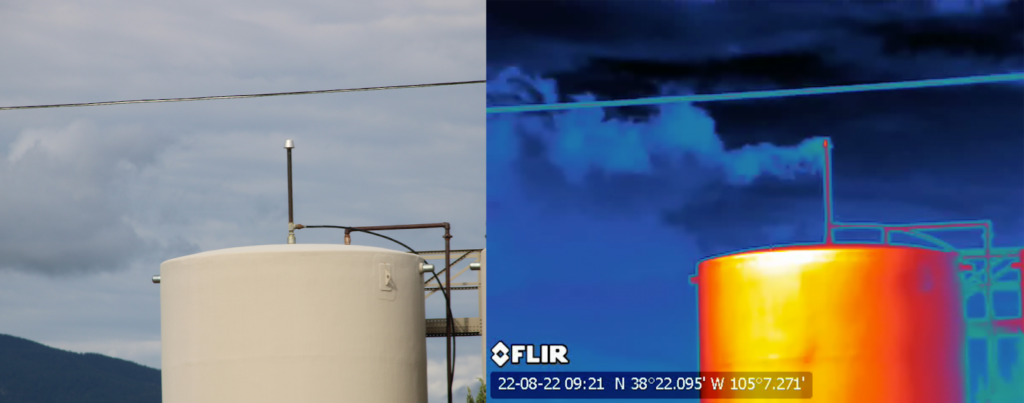
In 2022, Earthworks conducted 553 surveys with an optical gas imaging (OGI) camera at 383 oil and gas facilities, including well sites, compressor stations, storage facilities, waste disposal facilities, and gas plants. We submitted 135 of these surveys from 111 of the facilities as OGI evidence of hydrocarbon emissions events to the Air Pollution Control Division (APCD) because they potentially represented noncompliance with air quality regulations and/or indicated malfunctioning equipment or a maintenance issue.
That means we found potentially dangerous pollution during about a quarter of our surveys and at almost a third of the facilities we surveyed
84% of documented pollution events consisted of: uncontrolled emissions from tanks (46%) or emissions from inefficient combustion in enclosed combustion devices, flares, or burners (38%).
The remaining events consisted of emissions from unidentifiable sources or from leaks on other pieces of equipment (separators, wellheads, etc.)
While we notified the APCD of 135 events, in only 6 instances were we notified that staff had been dispatched to conduct an onsite investigation. As the law stands now, regulators cannot act on evidence submitted by third parties or impacted community members. So in order to take action they must first duplicate any findings that are presented to them. We’re working on changing that.
In other words, more than 95% of the potential issues we identified led only to a site inspection by the operator and not the APCD, based on the information we have.
Encouragingly, 37 of the 135 (27%) resulted in a repair, maintenance, and/or change in procedures as reported by the operator. The problem with this number, however, is that there were almost never any onsite follow-ups by the APCD to confirm that issues had actually been resolved.
The reason for our mistrust and skepticism is that issues we observed on some facilities were unfortunately still present months later. This occurred despite the fact that the APCD and operators had been notified and provided with visual evidence of these issues and that operators reported inspections and sometimes repairs in response to this evidence.
Video of emissions from malfunctioning burners on separators at a facility in February 2022:
Video of emissions from the same burners five months later in July 2022:
Video of uncontrolled emissions venting from storage tank on facility in May 2022:
Video of uncontrolled emissions venting from the same storage tank six months later in November 2022:
Video of uncontrolled emissions from open hatch on storage tank on facility in February 2022:
Video of uncontrolled emissions from same open hatch five months later in July 2022:
As far as we know, none of these facilities were inspected by APCD staff in person during these time periods.
So, what do our 2022 field surveys demonstrate? That Colorado has a long way to go to match talk with reality. We may have some of the strongest regulations for oil and gas in the nation. We may have regulatory agencies that are committed to reducing the worst impacts of oil and gas pollution on public health and the environment. However, in Colorado, oil and gas operators are still trusted to police themselves for violations. The results speak for themselves.

